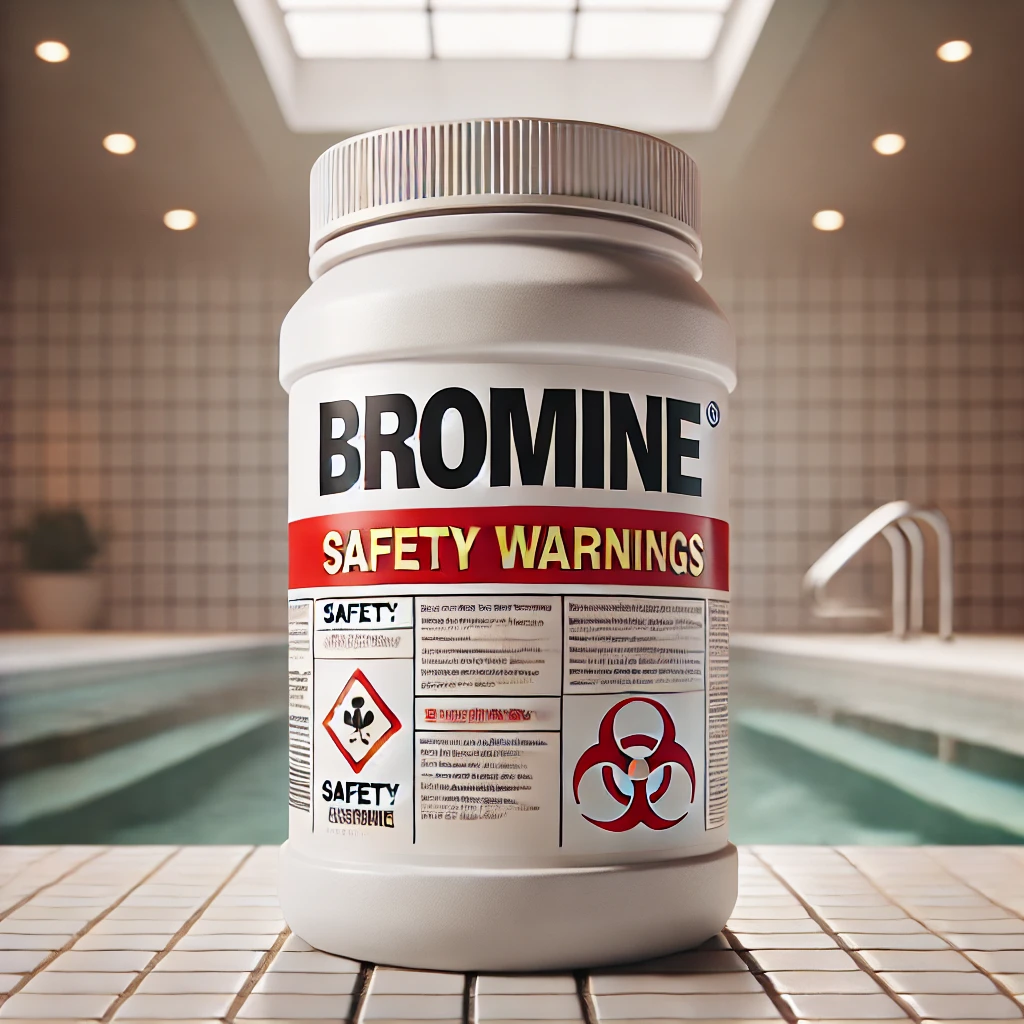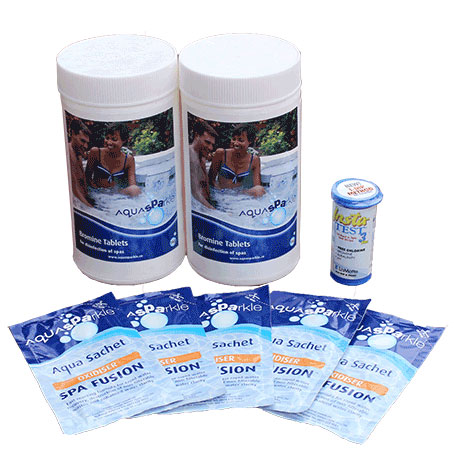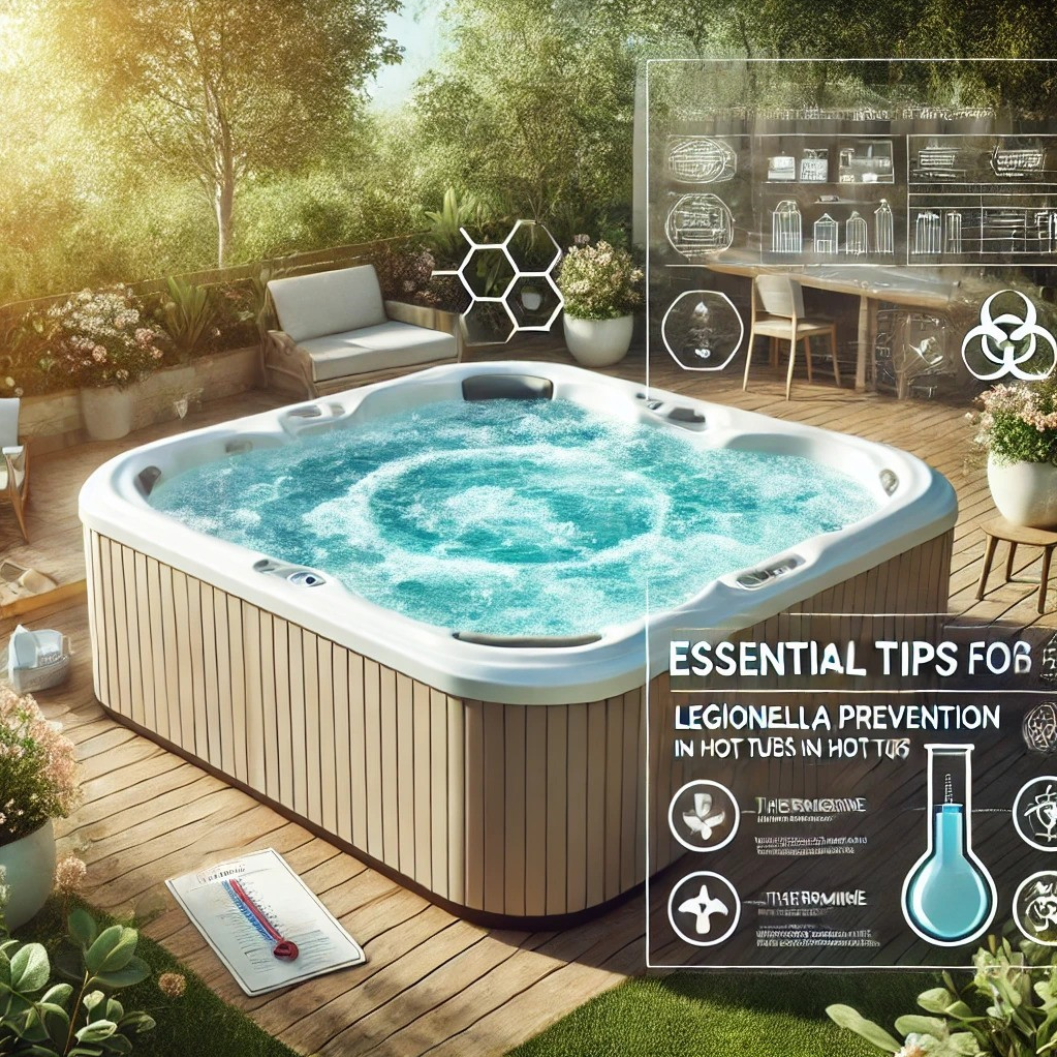Hot Tub Bromine Guide: Dosage, Shocking, Legionella Protection, and Maintenance
Bromine is one of the best options for sanitising hot tubs, particularly because of its stability at high temperatures and long-lasting sanitising properties. This Hot Tub Bromine Guide will walk you through everything you need to know, from correct bromine dosage and shocking, to protecting against Legionella, and maintaining water quality with proper pH balance and filter cleaning. Whether you’re maintaining a holiday let or your personal spa, this guide will ensure your hot tub remains safe and hygienic.
1. Bromine Dosage for an Average-Sized Hot Tub
For an average-sized hot tub of about 1,500 litres, bromine dosage varies depending on whether you use bromine tablets or granules:
Bromine Tablets:
- Dosage: Place 1-2 bromine tablets in a floating dispenser or inline feeder. This maintains the ideal bromine level of 3-5 ppm (parts per million)(WhatSpa?)(hottubsrock).
- Slow-Release: Tablets dissolve slowly, making them ideal for steady bromine levels without frequent maintenance.
Bromine Granules:
- Dosage: Use 1 teaspoon of bromine granules to raise the bromine level by approximately 1 ppm in a 1,500-litre hot tub(totallyhottubs.com).
- Quick-Action: Bromine granules dissolve quickly, making them ideal for immediate adjustments after testing your water levels(WhatSpa?).
2. How to Shock Your Hot Tub with Bromine
Regular shocking is essential to break down organic contaminants and bromamines (the byproducts of bromine). Though bromine lasts longer than chlorine, shocking helps restore its sanitising power.
When to Shock:
- Shock your hot tub weekly or after heavy usage to restore bromine’s effectiveness and remove contaminants(hottubsrock)(WhatSpa?).
Shocking Process:
- Turn on the Jets: Ensure the jets are running to circulate the water.
- Apply Non-Chlorine Shock: Use 20-30 grams of non-chlorine shock for a 1,500-litre hot tub.
- Wait and Test: After 15-30 minutes of circulation, test the water again to ensure safe bromine levels before allowing use(totallyhottubs.com).
3. Legionella Protection with Bromine
Bromine is particularly effective against Legionella, a bacteria that can thrive in warm water systems and poses serious health risks if inhaled in mist or vapour.
Why Bromine is Effective:
- Stability in Hot Water: Bromine is more stable than chlorine at high temperatures, maintaining its sanitising power in hot tubs that are kept between 37°C and 40°C(Pool Pro UK).
- Legionella Prevention: Bromine’s ability to sanitise at high temperatures makes it an ideal choice for preventing Legionella growth. Maintaining bromine levels between 3-5 ppm helps keep your hot tub water safe(hottubsrock)(WhatSpa?).
For commercial hot tubs or holiday lets, you may also need professional testing and documentation to ensure compliance with Legionella regulations(
4. Maintaining pH Levels for Bromine Efficiency
For bromine to work effectively, the pH of your hot tub water must be maintained between 7.2 and 7.8. A balanced pH ensures that the bromine remains active and your water stays clear.
How to Adjust pH:
- If pH is too high (>7.8): Bromine becomes less effective, and your water may appear cloudy. Use a pH decreaser (sodium bisulfate) to lower the pH.
- If pH is too low (<7.2): The water becomes too acidic, which can cause irritation and damage your hot tub components. Use a pH increaser (sodium carbonate) to raise the pH(WhatSpa?).
Test pH levels at least weekly to keep bromine working efficiently.
5. Filter Cleaning for Optimal Bromine Efficiency
Keeping your filters clean is vital for maintaining the water quality in your hot tub and ensuring the bromine can work effectively. Dirty filters can restrict water flow and reduce bromine’s ability to sanitise the water properly.
Filter Cleaning Tips:
- Clean Every 2-4 Weeks: For average usage, clean your hot tub filters every 2-4 weeks. If your hot tub is used more frequently, such as in a holiday let, consider cleaning filters more often(totallyhottubs.com).
- Rinse and Soak: Rinse the filters under running water to remove debris, and soak them in a filter cleaning solution every 4-6 weeks to break down oils and contaminants.
- Replace Annually: Check for wear and replace filters approximately every 12 months or sooner if necessary to ensure optimal water flow(hottubsrock)(Pool Pro UK).
Conclusion
Bromine is an ideal choice for hot tub owners who want a long-lasting, stable, and effective sanitiser, especially in high-temperature environments. By following the recommendations in this Hot Tub Bromine Guide, you can maintain proper bromine levels, balance the pH, and keep your filters clean, ensuring safe and hygienic water for every use. Bromine’s effectiveness in preventing Legionella makes it especially useful for holiday lets or commercial hot tubs.
For crystal-clear water and a relaxing experience, regular maintenance, including shocking, pH adjustment, and filter cleaning, is essential.
Internal and External Links:
For more detailed tips on maintaining your hot tub, visit our Hot Tub Maintenance Guide or explore Best Practices for Hot Tub Water Sanitisation.
External resource: Learn more about Legionella prevention in hot tubs from the UK Health and Safety Executive(


